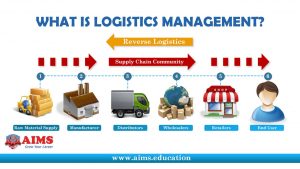Lights-Out Manufacturing
What is lights-out manufacturing?
Lights-out manufacturing is a manufacturing philosophy that does not rely on human labor. Facilities that employ lights-out manufacturing are known as “dark factories.” The name implies that the plant continues to be productive even when the lights are out.
We are seeing lights-out manufacturing emerge in real life, rather than just imagining it in a sci-fi movie. With the rise of Industry 4.0 and advancements in robotics and automation technologies, many activities no longer require manual intervention and unmanned machines can now perform them.

What are the advantages of automation?
The key advantages of automation capitalize on aspects of manufacturing that human capabilities traditionally limit. With less human intervention, processes become quicker and more precise. Automation allows significant reductions in the time it takes to produce one unit of product. Further, automation minimizes the potential for human error in production tasks.
Companies also standardize quality levels by taking out the manual components of production. Automation is proving to be sound investments for manufacturing facilities that have taken the leap to robotic manufacturing.
What are the disadvantages of automation?
Increased productivity and precision certainly are attractive competitive advantages. However, facilities should think twice about warehouse automation due to several impacts that come with it.
One disadvantage of changing to an automated facility is the initial costs. Existing traditional businesses tend to come across this issue more than newly designed facilities. The structural change that comes with automation, as well as new equipment to allow automation, can add up to a big initial bill.
Another significant impact of automation affects the human workforce. Automation makes way for new jobs in a different field of expertise, but at what cost? There is the potential to displace human jobs when tasks are assigned to robots and machines instead. The rise of dark factories also has the potential to cause a shift in the demand for jobs.
What are some examples of real-life “dark factories”?
Most real-life automatic factories still require some form of human contact to set up and maintain. However, some of these facilities already operate with significantly less human intervention, with robotic arms and even robots on wheels.
Some examples of notable factories belong to the following companies:
- FANUC – a secretive Japanese company that is arguably one of the first companies to implement a lights-out manufacturing culture.
- Amazon – the technology giant extensively uses robotic systems in their distribution centers with minimal human intervention.
- Philips – a company known to produce electric razors, among other things, that boasts of a facility with 128 robots while employing less than a dozen employees for quality assurance.
Want to keep reading?
Maintenance in the Food Manufacturing Industry
Maintenance in the Food Manufacturing Industry
What are the Best Blogs to Read for the Manufacturing Industry?
4,000+ COMPANIES RELY ON ASSET OPERATIONS MANAGEMENT
Leading the Way to a Better Future for Maintenance and Reliability
Your asset and equipment data doesn't belong in a silo. UpKeep makes it simple to see where everything stands, all in one place. That means less guesswork and more time to focus on what matters.

![[Review Badge] Gartner Peer Insights (Dark)](https://www.datocms-assets.com/38028/1673900494-gartner-logo-dark.png?auto=compress&fm=webp&w=336)
